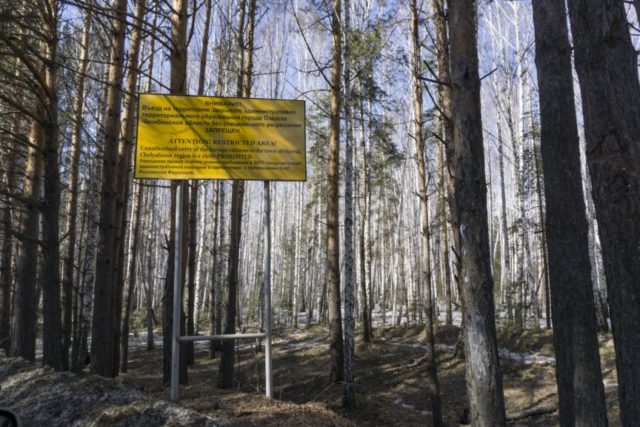New Scientist reported on Monday that a two-year-old mystery has been solved, and Russia has once again been caught lying about a nuclear accident, as a gigantic radiation leak in 2017 has been traced back to a Russian nuclear facility.
The radiation cloud detected by Italian scientists in October 2017 was reportedly over 100 times as intense as the leak from Japan’s Fukushima disaster.
Italian and German scientists were astonished when they discovered the immense surge of radioactive ruthenium-106 blowing in the wind from the Ural mountains, while Russia immediate denied responsibility and suggested a satellite with a radioactive battery might have blown up in the atmosphere.
Georg Steinhauser of Leibniz University Hannover labored for years with a sizable team of investigators and experts and managed to definitively track the radiation back to the Mayak nuclear facility in Russia, which suffered one of the worst nuclear accidents in history six decades ago:
Steinhauser and his colleagues decided to investigate more thoroughly by forensically analyzing 1300 measurements from hundreds of monitoring stations across Europe. They found that radiation levels in the atmosphere were between 30 and 100 times higher than those measured after Fukushima. “This was indeed quite alarming,” says Steinhauser.
The team excluded Romania as the source of the accident, despite the country’s high radiation levels. Each station in the country detected the radioactive plume simultaneously, which indicated the source was far enough away for it to have grown to the width of Romania.
They also excluded a satellite as the cause because space organizations didn’t report any missing at the time. The pattern of radiation through the atmosphere didn’t match the spread of radiation from a satellite’s reentry either.
Combining these findings with information on air movements and concentration levels from monitoring data, the team found clear evidence that the release happened in the Southern Urals, which is where the Mayak nuclear facility is located.
It turns out the Mayak facility was engaged in producing a particular radioactive product, cerium-144, for an Italian research lab when the radiation leak occurred. “There are several indications that the release of ruthenium-106 was linked to this order,” said Steinhauser.
The investigators decisively ruled out Russia’s excuse of a satellite crash, noting that no satellites came down during the time of the radiation leak, and in any event, a satellite would burn up at much higher altitudes than the leak was detected in.
The accident at Mayak in 1957 occurred when a poorly-designed and hastily-constructed tank full of reactor waste exploded, releasing a radioactive plume that floated for hundreds of miles through a populated area.
As with the more infamous incident at Chernobyl three decades later, the Russian government was slow to evacuate civilians and refused to admit the accident occurred at all. The Soviet Union did not officially admit to the Mayak explosion until 1989, three years after Chernobyl happened.
Steinhauser said his team’s research indicated the Mayak leak in 2017 was the “largest singular release of radioactivity from a civilian reprocessing plant.” Traces of the leak were detected as far away as the Caribbean. Fortunately, ruthenium-106 is a relatively safe isotope that decays quickly.
Steinhauser noted the Russians established a commission to investigate the 2017 leak, but it concluded there was not enough evidence to determine the origins of the radiation cloud.
“They came to the conclusion that they need more data, and so we feel like, okay, now you can have all of our data, but we would like to see yours as well,” he said.

COMMENTS
Please let us know if you're having issues with commenting.